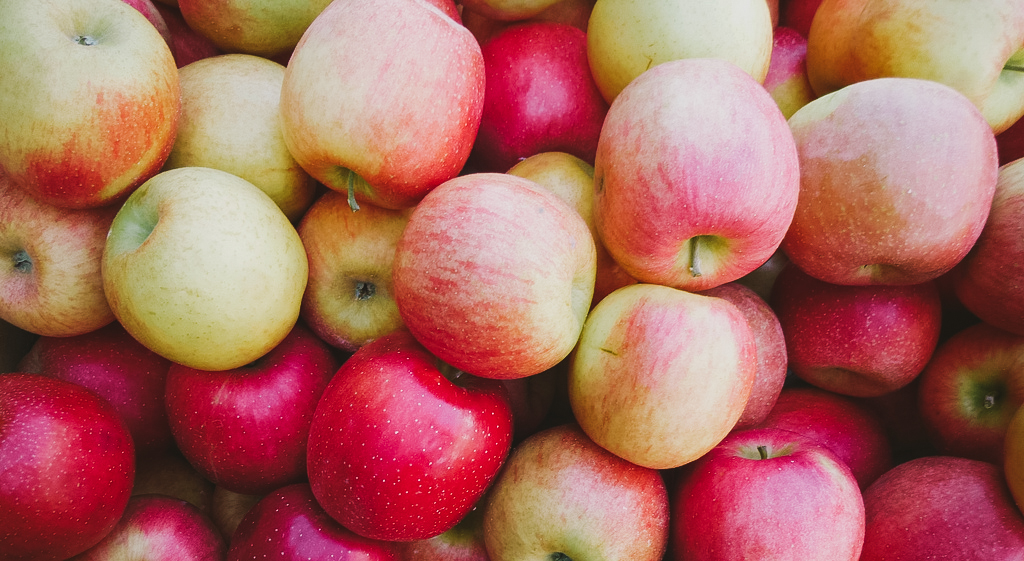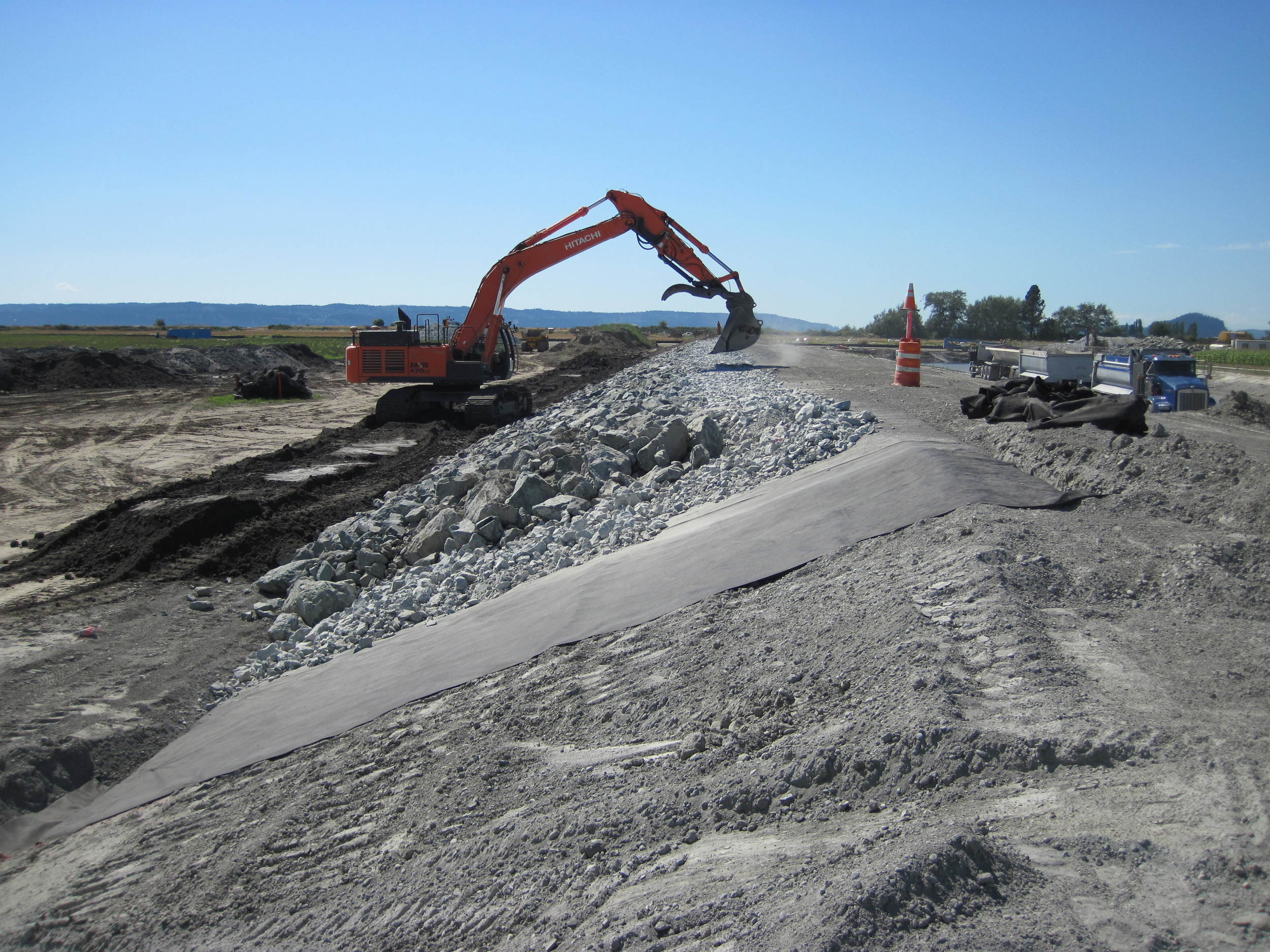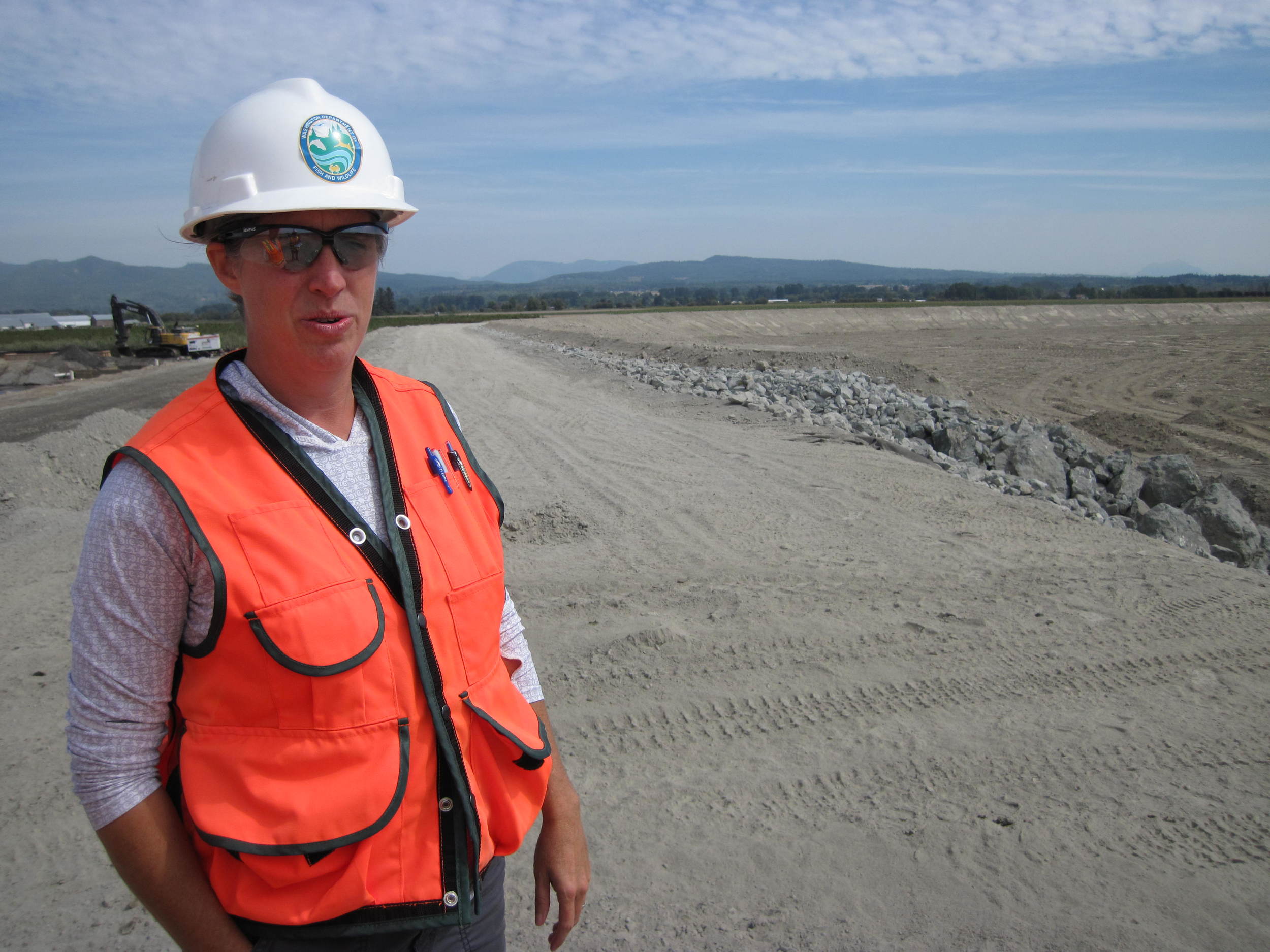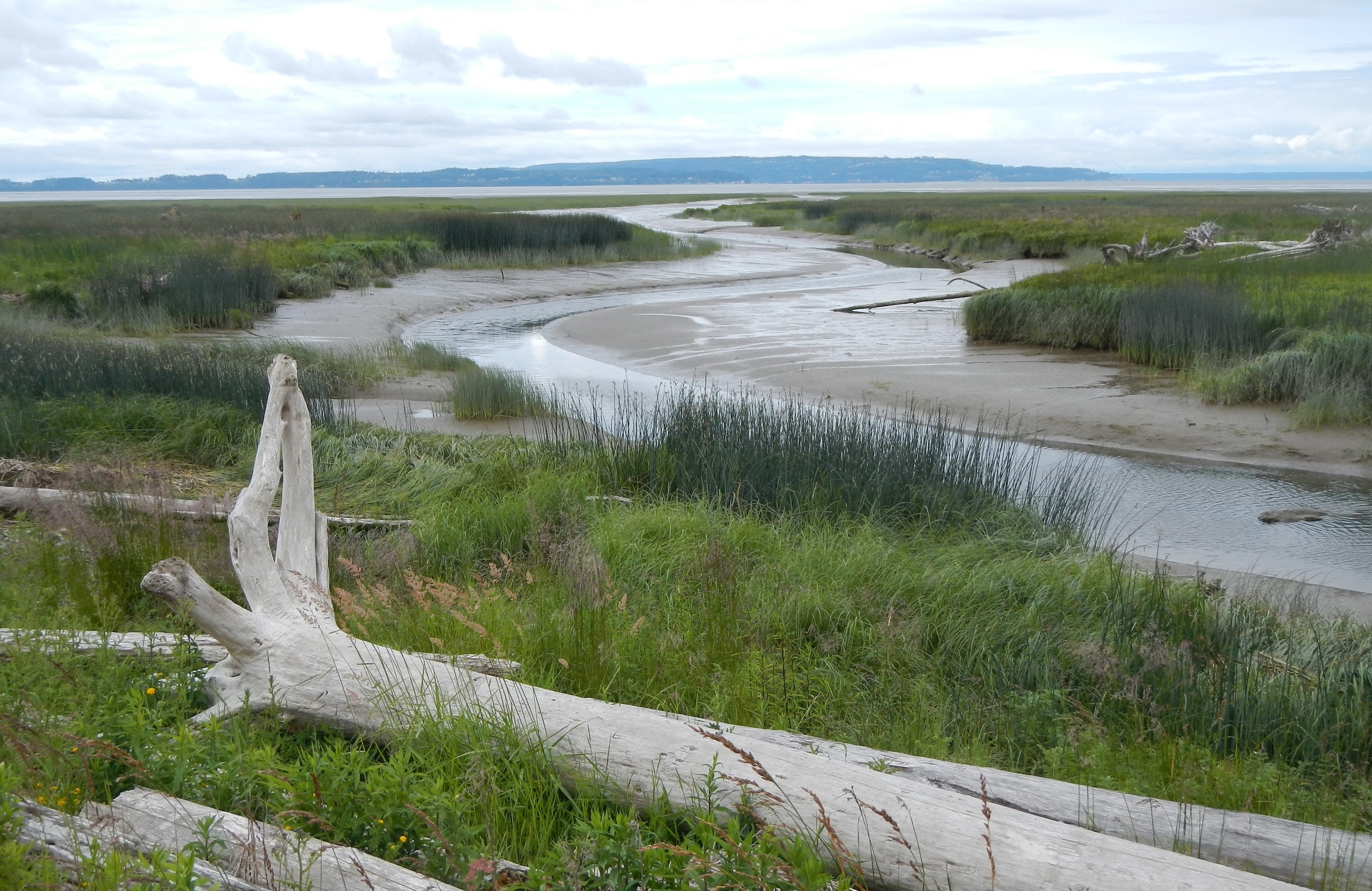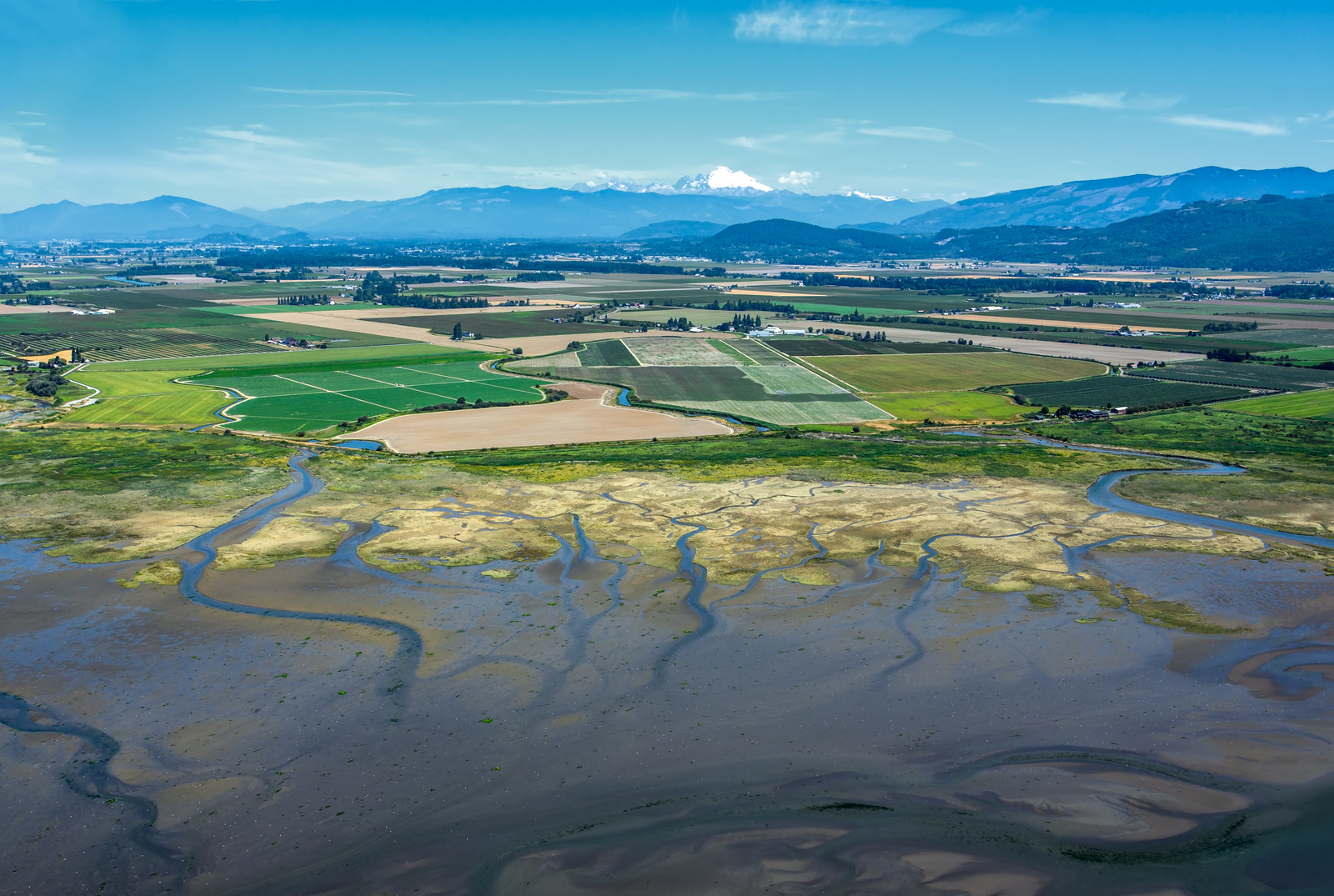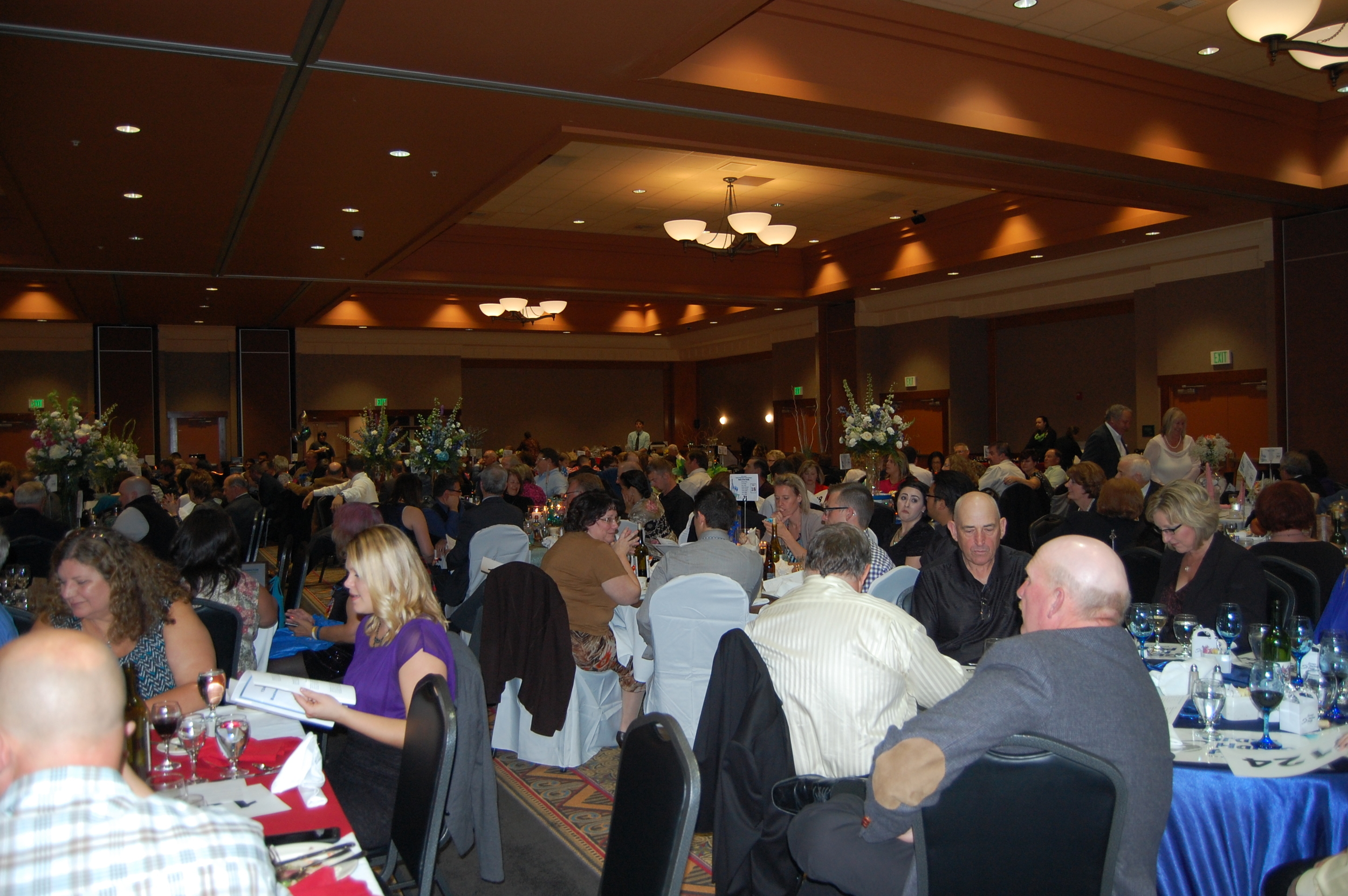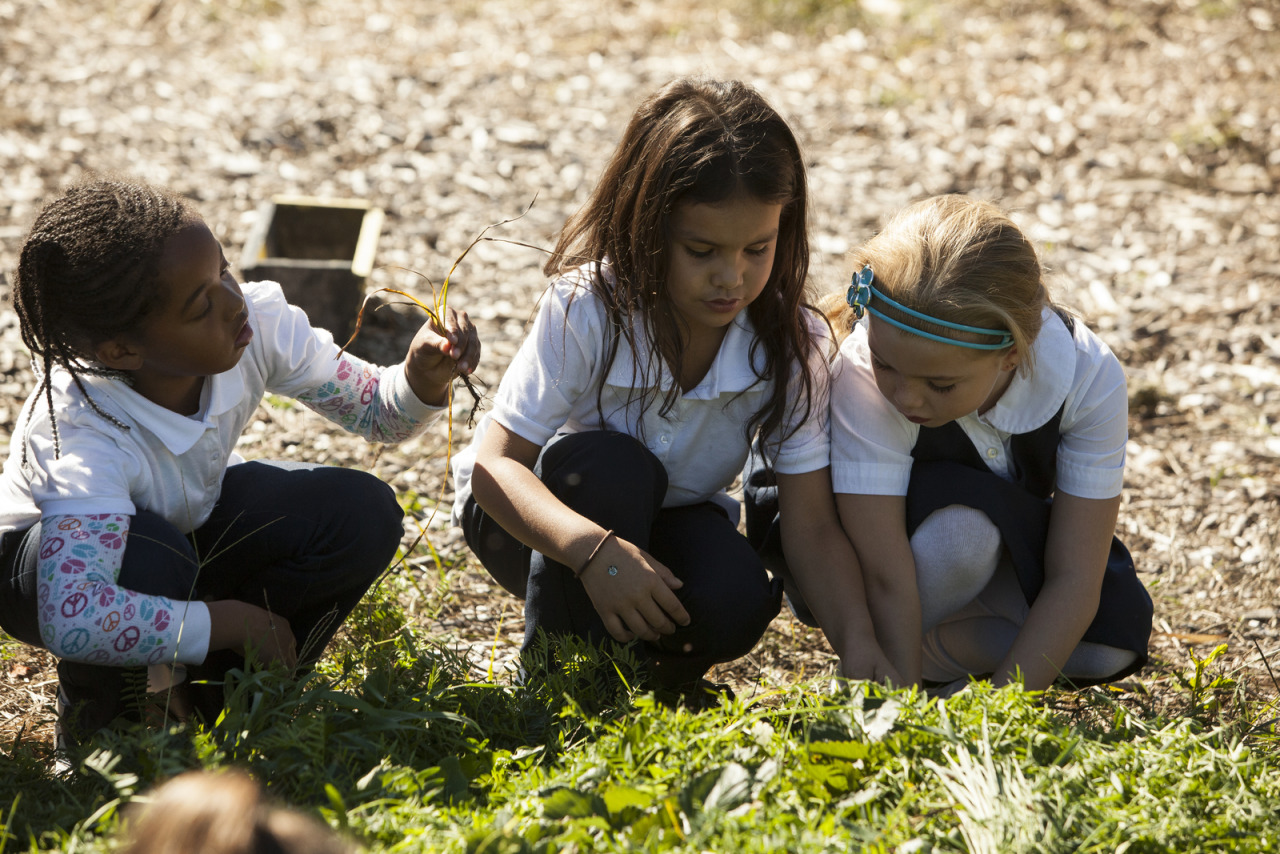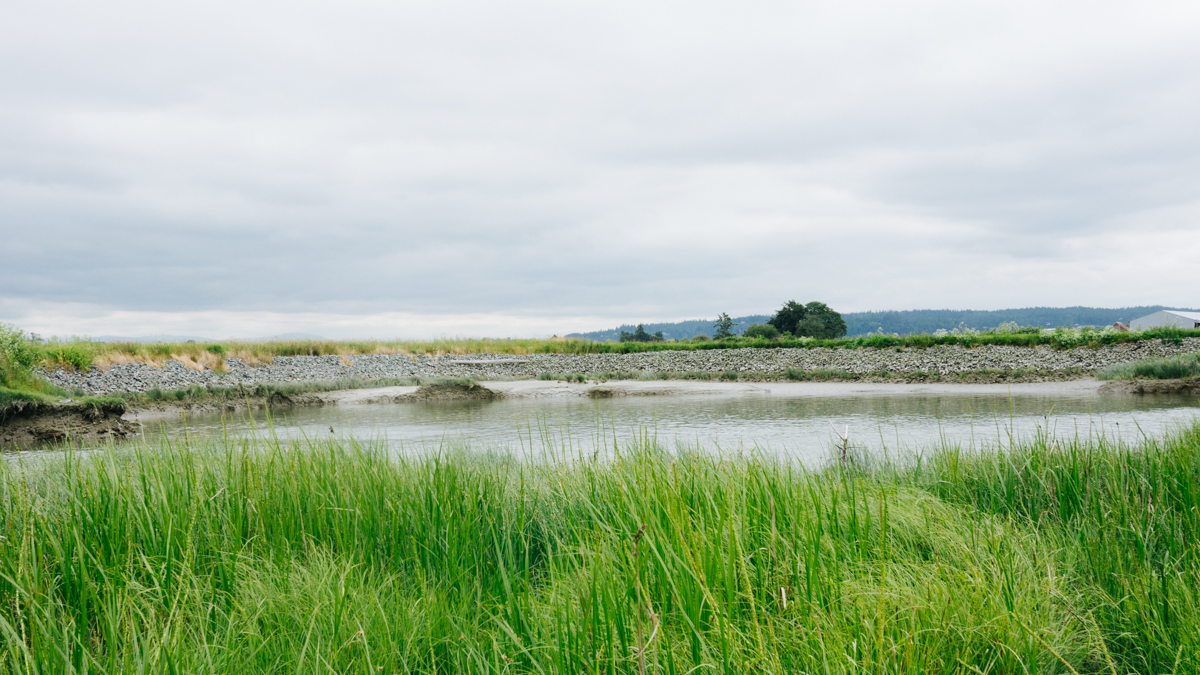A neglected parking lot has transformed into vibrant urban agricultural land and a leading example of how green stormwater infrastructure can be implemented at the community level.
Sustained by the Bounty of Nature
With so much time at home this year, it’s no wonder we have a new-found passion for cooking and locally sourced food. Happily, as the holidays approach, markets showcase Washington’s delicious natural harvest: berries and pears and apples, wild salmon, pumpkins, beer brewed from the world’s most productive hop fields.
Hillside Paradise Parking Plots growing more than food
Visit Us at Whole Foods on April 19 for Community Giving Day
Sink your teeth into trivia on Washington’s favorite fruit
If the old adage is true—that an apple a day keeps a doctor away—then the world owes a lot to Washington.
The Evergreen State produces more than half of all apples grown in the United States for fresh eating, according to the Washington Apple Commission. In fact, Washington apples are sold in all 50 states and more than 50 countries, meaning that many a person enjoy the fruits of Washington’s labors.
For Washington residents, our expansive apple orchards are one reason it’s easy to buy and enjoy local fruit.
Each and every Washington apple is picked by hand, and there are more varieties than a person can remember. The industry here is based primarily on seven principal varieties: Red Delicious, Gala, Fuji, Golden Delicious, Cripps Pink and Honeycrisp.
But an enterprising eater can sink their teeth into many more varieties, including rare heirlooms. Or search farther afield for your favorite of more than 7,500 varieties grown worldwide.
The sweet, crunchy apple is a large part of the economy and culture in Eastern Washington, home of Nature Conservancy Leadership Council and former board member Jack Toevs. For Jack, growing apples is a family operation, now involving his son. “The family has been involved in farming for centuries,” he said. “It’s our heritage.”
He’s observed many changes over the years. For example, the Red Delicious has been overtaken in popularity by the Gala. And many growers – himself included – have gone organic, meeting the public’s demand for more healthy and sustainable fruit. Our state cultivates 14,000 acres of certified organic orchards, according to the Washington Apple Commission.
It seems Washington has an ideal climate for apple production – particularly organic apples. “It’s a dry climate, with fewer problems for disease and insects. It’s just been a great place to grow apples,” said Jack.
In addition to serving as a Conservancy board member, Jack and his wife volunteer as stewards at the Conservancy’s Beezley Hills Preserve, which sits atop the hills visible from their orchard in the town of Quincy. This Eastern Washington preserve is awash with wildflowers every spring.
In Eastern Washington apple country you’ll find a strong connection between people and nature. That’s one of the reasons why The Nature Conservancy has a presence here, as well as in the Yakima Valley to the south and Skagit farmlands to the west. It’s the kind of win-win connection the Conservancy strives to create in communities everywhere we work: conservation that will bear fruit for generations.
The Fir Island Farm Project
Written by Beth Geiger
Photographs by Jenny Baker, Senior Restoration Manager
A tiny juvenile salmon swims down the Skagit River toward Puget Sound. The finger-sized fish finally arrives in the tidal reaches of the lower Skagit. It’s a big world of water and fields. Saltwater is just a splash away.
Next to the river, on Fir Island, farmers work some of the world’s most fertile agricultural land. In winter, thousands of migrating snow geese arrive in noisy white clouds. The scene is framed by snowy vistas of Mt. Baker to the east and verdant islands of Puget Sound to the west. It’s a beautiful place.
Yet for this little salmon, something critical is limited: a shallow estuary where it can grow, feed, and hide before entering the deep, exposed waters of Puget Sound. Century-old dikes built to keep floods and tides off the land to make farming the Skagit delta possible eliminated much of the estuarine marshes this young fish needs. Science tells us that restoring tidal estuaries is key to helping revive Chinook salmon populations in the Skagit watershed.
In a partnership with TNC, the Fir Island Farm project, managed by the Washington Department of Fish and Wildlife (WDFW), aims to do just what science tells us is needed for salmon, but in a collaborative way that also pays homage to the current agricultural productivity of this great place.
Most food is produced hundreds, sometimes thousands of miles from where it is consumed. That requires significant energy consumption, and it leaves communities at risk if the food supply chain becomes challenged. Preserving and enhancing farm productivity means preserving our ability to have local, sustainable fruits and vegetables now and in the future.
This is a complex system, in a critical landscape with lots of public and private interests at play – which is exactly The Nature Conservancy’s wheelhouse. No wonder this project is a balancing act. Balance estuaries for juvenile salmon with improved protection for farmland. Balance nature with community, farmers, and recreation.
The Conservancy is a critical partner in navigating this complex task. We contribute our expertise and “lessons learned” from projects that set the stage for this project, including nearby Fisher Slough. That project was managed by the Conservancy and completed in 2011.
This experience and others have taught us the importance of partners such as Consolidated Diking and Drainage District 22, which helps keep Fir Island’s farms dry. “The Conservancy was instrumental in encouraging us to talk to the Diking District early in the process,” says Jenna Friebel, Fir Island project manager for the WDFW. The Diking District, Friebel says, brought essential ideas to the project planning table, such as what type of tide gates and pumping station would work best.
In 2015 the Fir Island Farm project constructed 5,800 feet of brand new dike inland from the old dike, on a parcel of former farmland now owned by the Department of Fish and Wildlife. This summer the old dike will be removed, tides will flood in, and 131 acres will become a new tidal marsh.
By spring of 2017, tens of thousands of tiny Chinook salmon coming down the Skagit will find a safe haven, and a better future. “If the habitat is there, they can grow bigger and ready for the ocean,” says Friebel. At the same time, the future of farming here is preserved as well.
3 Budding Entrepreneurs Get a Jump Start
Washington Coast Works Sustainable Small Business Competition Winners Announced
Written & Photographed by Eric Delvin, Emerald Edge Project Manager
Over the last year I have had the distinct pleasure to help launch a sustainable small business competition on the Washington coast, Washington Coast Works. Last week the perseverance and vision of the 11 finalists in the competition paid off, for three of the budding small business owners, when the winners were announced at the Grays Harbor Business Leaders Banquet.
Emily Foster, a Quileute tribal member from LaPush, in Clallam County, won the first-place prize of $10,000 for equipment and supplies to launch Lonzo’s Seafood Company, offering smoked Quileute-caught fresh salmon.
After the awards, Emily told me about how important the award was for her and the Quileute community. She talked about how much fishing was an integral part of her family and tribal heritage. She noted how the prize money would provide her with an opportunity to expand the Quileute fish market in a sustainable way and keep the profits within her local community.
She said she was excited about this business because she will be promoting seafood that comes from Quileute. Growing up as the daughter of a commercial fisherman who has made a living fishing and crabbing for over 30 years, this business will allow her to work with him directly and benefit from his years of expertise.
Runners up were Liz Ellis, from Aberdeen in Grays Harbor County, and Jean Ramos, a Quinault tribal elder from Queets, in Jefferson County, who each received $5,000 to launch their businesses.
Ellis is starting the East Aberdeen Community Farm, where neighbors in the Wishkah River lowlands can grow, market and buy fresh local produce.
Ramos is creating SovereigNDNTea, a business selling locally and sustainably foraged Labrador tea.
The three were chosen from 11 semifinalists, who have all participated in workshops on entrepreneurship, business, and sustainability. Finalists also had access to one-on-one technical assistance from experienced business advisors to develop and refine their business concepts.
What is exciting to me about this project overall is that it represents a new way that The Nature Conservancy is approaching our work. Just as we emphasized to the contestants in the competition that they need to think about triple bottom line businesses that value economics, ecology, and people, TNC is approaching our work more broadly in the same way. While we work on forest and marine conservation projects we are also thinking about community and economic vitality as well. Small-scale, sustainable businesses have the potential to infuse new life into coastal communities, providing jobs and keeping local money local, and that’s the premise for Washington Coast Works.
Rep. Derek Kilmer, D-WA, who presented the awards said, “The Nature Conservancy and the Center for Inclusive Entrepreneurship are continuing to lead the effort to give our region’s small businesses an open field to launch their ideas and make a positive impact. This competition illustrated the great work happening on the Olympic Peninsula to create sustainable jobs and drive innovation.”
This project would not have been possible without our strong partners at Pinchot University, Center for Inclusive Entrepreneurship and the Taala Fund. Also, significantly, our prize funding was provided by First Federal Savings and Loan Association of Port Angeles and the Quinault Indian Nation.
I am super excited to kick off round two of Coast Works very soon, which we will launch in early 2016. Watch the Washington Coast Works website, www.wacoastworks.org, for updates.
GREENIFY BACK TO SCHOOL
The Nature Conservancy can help the children in your life become lifelong nature lovers!
Written by Cailin Mackenzie, Marketing GLOBE Intern
Photographed by Jeffrey Macmillan (Photos 1-3) and Jaci Downs (Photo 4)
Remember the school field trips you used to take? Clutching your brown bag lunch and the permission slip your parents signed? Filing onto the school bus? Listening as your teacher announces, “Okay kids, we’re headed to Burkina Faso to learn how a farmer is restoring forest lost to desertification”? No? Well now your child can! Minus the school bus.
Our Nature Works Everywhere program, with generous support from Lowe’s, takes a two-pronged approach to excite the next generation of conservationists. First, we use Conservancy science to engage kids with educational videos, lessons and virtual field trips. Second, we foster tangible environmental relationships with our school gardens program, featuring curriculum that helps students use the garden as a living laboratory and measure the ecosystem services it provides.
Classes
The number of K-12 students taking online courses has skyrocketed from 45,000 in 2000 to 6.7 million in 2012, representing a huge opportunity to bring nature into the classroom. In its four-year tenure, Nature Works Everywhere has brought ecology into the classroom for 2 million students through its digital platform, partnering with teachers to create relevant curricula that advances STEM goals and achieves a productive balance of entertainment and education. Currently, the program is working with LEAF participants to create high school lessons focused on urban sustainability, sustainable fisheries, and climate change.
Virtual Field Trips, another component of the program, are a wonderful opportunity for students to interact with Conservancy scientists and experience conservation in action. Can’t make the live field trip? No problem, you can stream them anytime. Take your child (or just yourself!) on a field trip close to home and learn about the Olympic rainforest and compare it to Arizona deserts.
Gardens
“Educational gardens give students valuable hands-on experience that grows into an appreciation for the environment and understanding of the importance of conservation” says Angela Brisson, Program Manager Nature Works Everywhere. “The main principle behind the Gardens program is that gardens model conservation science on a relatable scale. Gardens are tools to teach everything from watershed science to global climate change. Meanwhile, students are getting outside and connecting with nature in a meaningful, hands-on way.”
Any school with an existing garden can set up an account to track data from the garden’s production levels and ecosystem services. If your child’s school does not have a garden, excellent resources are available the teach how to design and build one. Washington State currently has two registered gardens, and we would love to increase local participation!
Nature Works Everywhere is a resource for everyone. Parents can register, get newsletters, share the videos with their kids, and attend virtual field trips. We invite parents to encourage their children’s teachers to incorporate this curriculum in their classroom. Your children just might find that a coral reef in Palau or an elephant herd in Sumatra affects them more than they think. Only 6% of children ages 9-13 play outside on their own every week – it has never been more important to connect future generations with the earth they rely on. Nature Works Everywhere is a potent, free way to invest in the children that will shape our planet’s future.
Farming for Wildlife
Farmers in Washington’s Skagit River Delta in northwest Washington State are adding a new crop to their fields — shorebirds.
By flooding parts of their fields with 2 or 3 inches of water for part of the year, these farmers are creating new or improved habitat for shorebirds such as Western sandpipers, black-bellied plovers, dunlins and marbled godwits and at the same time improving the health of the fields for farming.
The dedicated farmers are participating in an innovative research project The Nature Conservancy has launched in cooperation with Washington State University, the U.S. Environmental Protection Agency, Skagitonians to Preserve Farmland, and the Western Washington Agricultural Association.
Called “Farming for Wildlife,” the project is about finding ways to help provide some of the shorebird habitat that’s been lost while also supporting local farms. The partners involved are studying the relationship between three farming practices (mowing, grazing, and flooding) and habitat for migratory shorebirds. The intent of the experiment is to discover how habitat rotation can be compatible with crop rotations in the Skagit Valley.
THE SKAGIT DELTA COMMUNITY
The Skagit Delta is a vibrant rural community—one of the last strongholds of farming in Western Washington and a bread basket both regionally and nationally. The local community is rightfully proud and protective of its family farming heritage which reaches back for generations.
At the same time, the delta is rich in wildlife. Though altered over the years by human development, diking and draining, the delta continues to support tidal marshes and riverine habitats which host one of the largest and most diverse concentrations of wintering raptors on the continent.
And in recent winters, biologists surveying the delta have counted more than 150,000 dabbling ducks and more than 65,000 shorebirds, underscoring its status as a critical stop along the Pacific Flyway.
A WIN FOR FARMERS AND FLIERS
Worldwide, shorebirds have suffered dramatic population declines, and one of the greatest threats to these populations is the loss of wetland habitats. In the Skagit Delta, we’ve lost 70 percent of estuarine and 90 percent of freshwater wetlands. Despite that loss, the Skagit Delta still supports 70 percent of Puget Sound shorebirds during migration. Kevin Morse, the Conservancy’s Puget Sound program manager describes the delta as “one of the last best places for shorebirds.”
“They’ve lost this type of habitat along their migratory routes,” Morse said.
The real payoff will come if the Conservancy learns which practices are successful and can be replicated in other areas of the country. As part of the study, the Conservancy has rigorously monitored use of the habitat by shorebirds at different tide heights, as well as the presence of weeds, invertebrates in the soil and overall soil condition. If significantly higher numbers of shorebirds are feeding in the pilot fields than in neighboring farm fields, and the soil condition is measurably improved, and farmers embrace the treatments, that will spell success.
“If 100 years from now,” farmer Dave Hedlin said, “there are healthy viable family farms in this valley and waterfowl and wildlife and salmon in the river, then everyone wins.”
TO EAT OR NOT TO EAT?
Nothing says “Pacific Northwest” like a salmon sizzling on a barbeque in the summer. Salmon is an iconic food in the Pacific Northwest and we can’t seem to get enough of it. From 2000 to 2004, Americans consumed an average of about 284,000 metric tons of salmon annually. They’re willing to pay a high price for special runs such as Copper River salmon from Alaska.
But wait – aren’t salmon endangered? Should we be even be eating them at all?
WILD ALASKAN IS BEST
The answer is yes, especially if you’re buying wild Alaskan salmon. Runs of wild salmon in Alaska are over and above their historical levels. Eat all the wild Alaskan salmon you can find—they’re good for you, and the fish populations are not in trouble.
Salmon fishing is an important part of our economy and eating salmon connects us to our heritage. Salmon have sustained human communities for generations, fueling entire ecosystems as they swim up to 1,000 miles upstream to where they hatched, lay their eggs and then die, continuing the cycle of life in healthy rivers and streams.
In the lower 48 states, salmon populations have been drastically reduced by over-fishing, dams, logging and water diversions. This has led to listing some species of salmon on the endangered species list.
Salmon need cold, clear water to thrive. In Washington state, The Nature Conservancy is working to restore forests on the Olympic Peninsula so that they provide shade and filter the water for our rivers and streams. In time, this conservation work will lead to recovery of wild salmon populations.
WHAT ABOUT FARMED SALMON?
Some salmon you see in stores is actually farmed salmon, rather than wild. What exactly is the difference? Farm-raised salmon live their whole lives in pens, can breed disease, and are fed fishmeal that can be highly contaminated with PCBs or polychlorinated biphenyls. The name itself should let you know that these chemicals are not a good thing to ingest!
On the east coast, the only real wild Atlantic salmon are currently in Nova Scotia, so if you’re seeing Atlantic salmon in the store, unless it says Nova Scotia wild salmon, it’s probably farmed fish.
HEALTH BENEFITS
Salmon is chock full of omega-3 fatty acids, the good kind of fat, which means it’s not only good for your heart but can reduce excess inflammation in our bodies that can cause chronic illness. Even one small serving of salmon contains a full day’s dose of Vitamin D, along with a whole host of other nutrients.
Canned salmon is a good option, since it’s usually wild caught. And both wild and farmed salmon typically contain low levels of mercury. In short, salmon is good for you. Eat up and enjoy!
Conservation Can Be Delicious
Meet Kevin Morse
Our Puget Sound Working Lands Program Director!
Conserving Manastash Forest For Wildlife, Water and People
More streams for fish, hiking trails for people and habitat for wildlife. That is just some of what we are getting after the newest purchase of land for people and nature .
The latest addition to the Heart of the Cascades project is 1,280 acres of timberland in the Manastash, west of Ellensburg. The decade-long effort to weave together a checkerbaordof public and private lands in the East Cascades takes another step forward, adding to more than 25,000 acres of private timberlands brought into public ownership.
In this case, The Nature Conservancy has purchased 1,280 acres of timberland from Plum Creek, and transferred it to the Washington Department of Fish and Wildlife to be managed as part of the L.T. Murray Wildlife Area.
Working with partners including the Department of Fish and Wildlife, the Yakama Nation and Rocky Mountain Elk Foundation, the Conservancy continues to secure public access and protect this vital resource for our communities. The Tapash Sustainable Forests Collaborative, which includes public, non-profit and tribal landowners, is working together across in this region to restore a much larger forest landscape.
Water for the Future
Why does it matter? These particular sections of forest are full of streams and tributaries that flow into the Yakima River. Conserving this forest will protect valuable river habitat for wildlife as well as ensure water downstream for people, fish, and the rich agriculture of the Yakima Valley. Protecting these forests is an important part of the Yakima River Basin Integrated Plan, a coordinated effort by farmers, conservationists, tribes, and governments to ensure water for the Yakima Valley as climate change threatens increasing drought.
Rich Wildlife Habitat
Washington’s Heart of the Cascades is a multi-phased project designed to protect, connect, and restore the most biologically rich forests in the Western United States.
From high mountain snowfields descending to the arid sagebrush steppe of the Columbia Plateau, the Cascade forests span rugged and beautiful country that supports a diverse variety of habitats and, in turn, a broad array of species. In addition to amazing abundance of birds, mammals, fish, trees, and flowers, these forests are home to federally protected populations of grey wolf, spotted owl, ferruginous hawk, northern goshawk, and Pacific salmon. People across the region prize these forests for their many recreational activities.
Your Support will Help Save Forests for Nature and People
Today, we have a remarkable opportunity to invest in the future of this place and to protect what we love about it – lush alpine meadows, clean cold mountain streams, and the unfettered access that comes with a connected and protected landscape. We have this opportunity because tens of thousands of acres of private commercial timberlands are for sale. These lands, privatized in the 1800s to bring the railroads to the Pacific, disconnect our federal forestlands from our state Wildlife Areas. Their sale to development threatens access and opportunity for people and wildlife on this landscape.
The Heart of the Cascades project is a cooperative effort by conservation groups, tribes, residents, and public land management agencies to accomplish the following:
- Protect 110,000+ acres of forests that will reconnect a four million acre landscape
- Protect access and open space for people and wildlife
- Restore the natural functions and processes that sustain these forests, including reintroducing beneficial fire and restorative thinning where needed
- Support local economies working in a compatible way with the natural resources and values of the region
BIG: Topic of the day at Puget Sound floodplains conference
By: Julie Morse, Project Ecologist
That’s a first. Trust me, I’ve attended a lot of conferences with Floodplain Managers, Biologists, Engineers, City Planners, etc… And I have NEVER seen this kind of inspirational language show up in the middle of a PowerPoint presentation. Presentations at these kinds of workshops are generally pretty dry - lots of numbers, graphs and figures. Sometimes the creative speakers will throw in a video or pretty pictures to keep people awake. But let’s be honest, these workshops are generally pretty dry with lots of “Blah, Blah, Blah…”
Yesterday was different.
Yesterday, The Nature Conservancy in Washington convened a workshop for people working in Puget Sound as part of our Floodplains by Design Partnership. Despite the fact that it was a beautiful June day and plenty of people were off of vacation, despite the fact that Seattle was experiencing one of its epic traffic days, despite the fact that there were other big meetings happening in the area, despite all that, more than 150 people showed up to hear what’s happening with Floodplains by Design.
Representatives from five Congressional offices and one U.S. Senator’s office. Staff from seven counties were there along with representatives from four of Puget Sound’s tribes. Farmers, businesses that work in flood plains and agencies came. What’s more - people even came from across the state (Yakima) and even out of state (Oregon) to hear what was happening in Puget Sound.
There was a buzz in the room, and with good reason. Among the successes we celebrated:
- In 2013, over $44 million in state legislative were appropriated for integrated floodplain projects
- This funding has helped catalyze 15 big projects – providing multiple benefits to a number of communities including reduced flood risks, restored salmon habitat, improved water quality, agricultural infrastructure upgrades and enhanced public access and recreational opportunities.
Colonel Estok, outgoing Seattle District Commander of the U.S. Army Corps of Engineers thanked everyone in the room for their efforts working collaboratively, and The Nature Conservancy for being the glue that pulls these different groups together. He reflected on three years of incredible progress.
But it was also time to look forward. Here are some huge opportunities for collaboration and getting Big Things Done in the coming year:
- A new capital budget request highlighting at least $50 million in compelling, ambitious, needed projects
- Potential ballot initiative to create an even larger, dedicated revenue source for multiple benefit floodplain projects
- Colonel John Buck was introduced as the new Seattle District Commander for the Army Corps of Engineers, an important partner in the FbD Partnership
The best presentation of the day was the last, given by our government relations director Mo McBroom. Through Mo’s talk I could see her spunky enthusiasm was going to battle with her more subdued professional side. Mo was clearly trying to contain her excitement about the potential for the legislature to help support, and be a leader nationally, in addressing water issues - whether it’s too much water (flooding), too little water (irrigation needs), or nowhere for the water to go (stormwater). I’m not sure trying to contain her enthusiasm was really working for her, in fact quite the opposite; I thought her enthusiasm was contagious.
Mo ended her presentation with reiterating the phrase of the day - Think BIG. Believe BIG. Act BIG. And the results will be BIG. There are BIG things happening in Puget Sound. Yesterday I felt incredibly proud to be part of it.
To hear more of what people are saying about Floodplains by Design, please visit our website – http://www.floodplainsbydesign.org/perspectives/
CLIMATE CHANGE: HERE AND NOW
Climate change may feel like something that will impact us in the future, but local environmental scientists know it is already here causing noticeable changes and creating new challenges.
Jodie Toft, Senior Ecologist for The Nature Conservancy in Washington answers some questions about how climate change is affecting us now, and what the Conservancy is doing to help.
Question: What kinds of changes is climate change already causing in our state?
Jodie Toft: There is clear scientific evidence that the impact of climate change is being felt in the Pacific Northwest.
- Sea levels are rising
- Rivers are peaking earlier
- The temperature in the Pacific Northwest is rising
- Snowpack in the Cascades has declined by nearly 25%
- Mountain pine beetles are attacking forests at record levels due to warmer, dryer conditions
- Western wildfires have increased significantly
- Rising levels of carbon dioxide in the water are causing the ocean to become more acidic, damaging marine life
Question: What do scientists predict will happen in the future?
Jodie Toft: Research shows the impact of climate change on our region will increase in the coming years:
- Air temperatures will continue to rise
- Severe flooding is predicted for western Washington, while eastern Washington will face drought, threatening agriculture, salmon and community safety
- Damage from wildfires will increase
- The ocean will become warmer and more acidic
- Beaches, tidal swamps and marshes will shrink, diminishing vital habitat for fish, birds and wildlife
Question: This feels overwhelming. What can, or is being done?
Jodie Toft: At The Nature Conservancy, our work is aimed at adapting to climate change.
- Active forest restoration including mechanical thinning and controlled burning are creating large forest landscapes that re more resilient to fire, drought, insects and disease.
- We’ve modeled and are implementing an innovative approach to manage the flood risk to Puget Sound communities through large scale projects that protect fish, habitats, farms and humans
- Along the Washington coast, we’re helping communities steward land and marine resources, and plan for the increasing impact of climate change
Virtually every challenge we tackle can be traced to changing climate. As we look to the future, our focus is on adapting to current and future changes to protect people and nature.
DINNER AT THE TOP
By Carrie Krueger, Director of Marketing
Food and nature go hand in hand. Without nature, our plates are empty. This Earth Day, we’ve been celebrating how nature feeds us and examining what we need to do to protect nature so that we can keep enjoying its bounty.
In my family Easter is a day of celebration, friends and great foods. This year we decided to connect our spring feast to our love of nature by taking our Easter brunch up a local mountain. We joined forces with friends to create the ultimate movable feast. The result: Brunch with a view, and a new appreciation for how nature feeds us.
Let’s just admit our packs were pretty heavy. We weren’t content with the usual hiking fare- sandwiches, apples, granola bars. For our celebration we wanted a full, hot meal which meant carrying a camp stove, frying pan, a hefty fruit salad, a bin of fresh cooked blueberry muffins and most important all the fixings for breakfast burritos. Pre-cracking the eggs probably saved us a lot of grief! And pre-cooking sausage and veggies was also wise. But all these goodies, including condiments for the burritos, and the fixings for Easter mimosas had us pretty weighed down on the trip up.
Luckily we picked a peak that can reasonably be reached in 90 minutes. The very popular Poo Poo Point trail in Issaquah is a suburban delight – relentlessly up, overused on weekends, but also spectacularly beautiful with a view at the top that rewards every sweaty step. The location of this trail, in the heart of Seattle’s rapidly developing eastside, represents a classic intersection of human needs like housing and agriculture, with nearly pristine nature. On the trek up a fellow hiker pointed out an owl nesting in a large pine, and near the top, a turkey vulture circled.
The trail is also favored by paragliders who step off of the steep cliffs near the top, and into the sky, attached to enormous kites which keep them aloft. We paused to watch these bold adventurers launch into the blue. But alas, our brunch beaconed and we continued on.
The summit of Poo Poo point feels remote. But there are some communications towers, and oddly, a picnic bench, where we set up our elegant dining table. Eggs were scrambled, tortillas were warmed, a champagne bottle was popped and hot chocolate was topped with marshmallows. This was first class, all the way.
Other weary hikers wandered by, noticing our feast. We invited all to join, ready to share our bounty. The view from our perch was nothing short of spectacular: Forests, lakes, and mountains in the distance, but also farms, houses, roads and many reminders that we coexist with nature.
As burritos were inhaled and the dog begged for leftovers, we raised our mugs and glasses in a toast to the beautiful day, our remarkable feast and the fact that nature feeds us – on Easter, on Earth Day and all year.










